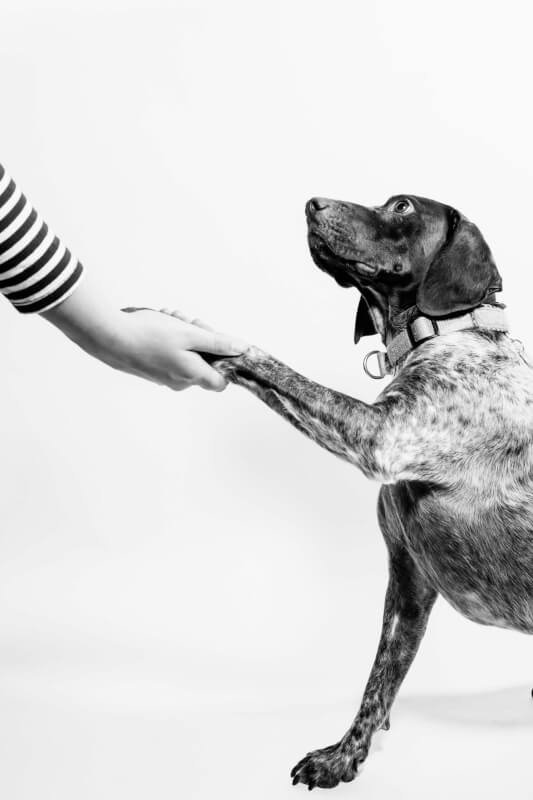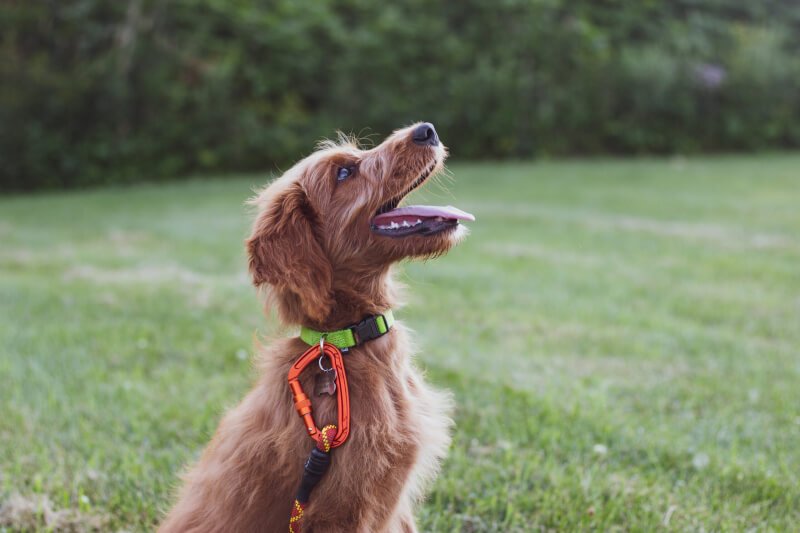You’re curious about how much dog behavior training costs. Whether you’ve just adopted a new furry friend or you’re struggling with your current four-legged companion’s behavior, understanding the financial aspect of training is crucial. In this article, we’ll explore the various factors that contribute to the cost of dog behavior training, helping you make an informed decision and find the right program for your beloved pup. From group classes to individual sessions with professional trainers, we’ll cover it all so you can embark on the journey of training your dog with confidence.

Factors Influencing the Cost of Dog Behavior Training
Experience and Qualifications of the Trainer
One of the major factors that influence the cost of dog behavior training is the experience and qualifications of the trainer. Trainers who have been working in the industry for a longer period and have achieved higher levels of education and certification often charge higher fees. This is because their extensive knowledge and expertise in handling various behavioral issues make them more sought after and trusted among dog owners.
Ready for Cat Trivia?
Test your knowledge about cats!

Location
The location of the training facility also plays a significant role in determining the cost of dog behavior training. Training centers located in major cities or upscale neighborhoods tend to have higher operating costs, including rent and staffing expenses. As a result, the fees charged by trainers in these areas can be higher compared to those in smaller towns or more affordable areas.
Training Methods Used
The training methods used by the trainer can also impact the overall cost. Trainers who specialize in positive reinforcement techniques or force-free training methods often charge higher fees, as these methods are considered more humane and effective. On the other hand, trainers who rely on compulsion-based or aversive training methods may offer lower prices but can have negative consequences on your dog’s well-being and long-term behavior.
Duration of Training
The duration of the training program can affect the cost as well. Some behavioral issues may require more extensive and intensive training sessions over an extended period. These types of programs tend to have higher fees, reflecting the time and effort invested by the trainer. Conversely, less severe problems or basic obedience training may be addressed within shorter training periods, resulting in lower costs.
Behavioral Problems to Be Addressed
The specific behavioral problems your dog is experiencing can also impact the cost of training. Certain issues, such as aggression or separation anxiety, may require more specialized knowledge and training techniques, which can be reflected in higher fees. On the other hand, basic obedience training or puppy socialization classes may be more affordable, as they cover a broader range of general behaviors.
Group Training vs. Private Training
The format of the training sessions, whether they are conducted in a group setting or on a private basis, can influence the cost. Group training classes, where multiple dogs and owners participate together, often have lower per-session fees since the trainer’s time and attention are divided among several participants. Private training, on the other hand, offers a more personalized approach and can be tailored specifically to your dog’s needs, but typically comes at a higher cost.
Additional Services Included
The inclusion of any additional services in the training package can affect the overall cost. Some trainers may offer value-added services such as follow-up sessions, written training materials, or access to online resources as part of their training program. While these extras may increase the upfront cost, they can provide added convenience and support during the training process.
Training Package Deals
Many trainers offer package deals for multiple training sessions or programs. These packages often come at a discounted rate compared to booking individual sessions. It is worth considering these deals, as they can provide both cost savings and a more comprehensive and consistent approach to your dog’s behavior training.
Travel Expenses
In some cases, trainers may need to travel to your location for training sessions, especially for private training. If this is the case, travel expenses, such as transportation costs and travel time, may be factored into the overall cost. For clients who require in-home training or live in remote areas, these additional expenses can contribute to higher training fees.
Frequency of Sessions
The frequency of the training sessions can influence the overall cost. Some trainers may recommend frequent sessions, such as multiple times per week, especially for behaviorally challenging dogs. These more intensive training schedules require a higher time commitment from the trainer and may result in higher fees. Conversely, less frequent sessions, such as once a week or bi-weekly, may be more cost-effective for dog owners with budget constraints.
Average Costs of Dog Behavior Training
Basic Group Training Classes
Basic group training classes typically range in cost from $100 to $300 for a set number of sessions, which can vary from 4 to 8 weeks depending on the training provider. These classes cover essential obedience commands, socialization skills, and addressing common behavioral issues such as jumping or leash pulling. Group settings offer the added benefit of socializing your dog with other dogs and owners, facilitating better behavior in public spaces.
Private One-on-One Training Sessions
Private one-on-one training sessions are generally more expensive than group classes, ranging from $50 to $150 per hour-long session. These sessions provide a more personalized approach to address specific behavioral problems and can be customized to your dog’s individual needs. Private sessions are often recommended for dogs with severe behavioral issues or those requiring specialized training.
Board and Train Programs
Board and train programs involve sending your dog to a training facility where they stay for a designated period while receiving intensive training from professionals. The cost of board and train programs can vary significantly depending on the duration of the program, the training facility’s location, and the level of training provided. On average, these programs can range from $500 to $2,500 per week, with more advanced training and specialized behavior modification programs on the higher end of the price spectrum.
Behavioral Consultations
If you only require guidance and advice on specific behavioral problems, behavioral consultations can be a cost-effective option. These consultations, which typically last for one to two hours, range in cost from $75 to $200 per session. During the consultation, a professional trainer will assess the dog’s behavior, provide recommendations and strategies to address the issue, and offer follow-up support if needed.
Puppy Training Classes
Puppy training classes are designed to help puppies develop foundational obedience skills, socialize with other puppies, and prevent future behavior problems. The cost of puppy training classes generally ranges from $100 to $300 for a complete course, lasting between 4 to 8 weeks. These classes focus on basic commands, house-training, and addressing common puppy behaviors like chewing or biting.
Specialized Training (Aggression, Anxiety, etc.)
Specialized training programs, such as aggression or anxiety management, are typically more expensive due to the complexity and expertise required. These programs often involve in-depth assessments, behavior modification plans, and ongoing support. The cost for specialized training can vary widely depending on the severity of the issue and the length of the program, but it generally ranges from $500 to $2,000 or more.
Follow-up or Refresher Sessions
Follow-up or refresher sessions are additional training sessions that dog owners can schedule after completing a training program. The purpose of these sessions is to reinforce previously learned commands or address any new concerns that may arise. The cost of follow-up or refresher sessions usually ranges from $50 to $150 per session and can be a valuable investment in maintaining your dog’s training progress.
Online or Digital Training Programs
In recent years, online or digital training programs have gained popularity as a more affordable and flexible option. These programs typically consist of pre-recorded video lessons, instructional materials, and access to a community of trainers and fellow dog owners. The cost of online training programs varies depending on the provider and the level of support offered, but generally ranges from $100 to $500 for a comprehensive program.
Training Equipment and Tools
While not directly related to the cost of training programs or sessions, the expenses associated with training equipment and tools should be taken into consideration. Treats, clickers, leashes, harnesses, and training aids are often necessary for effective training and behavior modification. Depending on the quality and quantity of the items purchased, these costs can range from $50 to $200 or more.

Factors Affecting Variation in Dog Behavior Training Costs
Geographical Location
Geographical location is a significant factor contributing to the variation in dog behavior training costs. Urban areas or regions with a high cost of living typically have higher training fees due to increased operating costs. In contrast, rural areas or locations with a lower cost of living may offer more affordable training options.
Type of Training Facility
The type of training facility can also affect the price of dog behavior training. Established training centers with state-of-the-art facilities and a comprehensive range of services may charge higher fees to cover their overhead expenses. On the other hand, smaller, independently operated facilities or trainers working from home may offer more budget-friendly options.
Trainer Reputation and Demand
Trainer reputation and demand play a role in pricing as well. Trainers who have built a positive reputation for achieving successful results with their clients often have higher demand for their services. This increased demand can lead to higher prices as trainers are in a position to command a premium for their expertise and experience.
Competitor Pricing
Competition within the dog behavior training industry can impact the cost of services. In areas with numerous training providers, trainers may adjust their pricing to stay competitive and attract clients. This can result in a wider range of prices, with some trainers offering lower rates to differentiate themselves in the market.
Training Intensity and Programs
The intensity and complexity of the training required can influence costs. Dogs with severe behavioral issues or those requiring specialized behavior modification programs may need more hours of training, dedicated attention, and follow-up support. These factors can increase the overall cost compared to dogs with less severe issues.
Training Certification and Recognition
Trainers who have obtained certifications or achieved recognition from reputable organizations may charge higher fees due to their enhanced credentials. These certifications often involve rigorous training and demonstrate a trainer’s commitment to maintaining high standards of knowledge and practice in dog behavior training.
Additional Services and Amenities
Training facilities that offer additional services and amenities, such as pet boarding, grooming, or daycare, may have higher overall operating costs. In turn, this can impact the cost of their behavior training programs. While these additional services may not directly affect behavior training fees, they can contribute to a higher overall bill if you choose to take advantage of them.
Duration of Training Programs
The duration of training programs can vary significantly depending on the behavioral issues addressed. Programs that require more extended periods of training may have higher costs to account for the additional time, effort, and resources allocated by the trainer.
Inclusion of Training Materials
Trainers who provide comprehensive training materials, such as written handouts, training guides, or video tutorials, may charge higher fees to cover the cost of developing and providing these resources. These materials can be invaluable tools for dog owners to reinforce the training at home and enhance their understanding of the training techniques.
Individualized vs. Group Training
Individualized training programs, where the trainer focuses solely on your dog’s specific needs, are generally more expensive than group training sessions. This is due to the personalized attention and tailored approach provided in individual sessions. Group training, while typically more affordable, is a great choice for dogs that benefit from socialization with other dogs as part of the training process.

Tips for Finding Affordable Dog Behavior Training
Research Local Training Providers
Start by researching local training providers in your area. Look for trainers with a positive reputation and a track record of successful outcomes. Read reviews and testimonials from previous clients to get an idea of their training methods and customer satisfaction. Consider reputable online directories or ask for recommendations from friends, family, or your veterinarian.
Compare Prices and Services
Once you have identified several potential training providers, compare their prices and services. It’s essential to consider both the cost and the value offered. Look for what is included in the training program, such as the number of sessions, follow-up support, and any additional resources provided. Be wary of trainers who offer significantly lower prices without providing the necessary expertise or support.
Consider Online or Digital Training Options
Online or digital training options can often provide a more budget-friendly alternative to traditional in-person training. These programs usually offer flexibility in terms of scheduling and tend to have lower upfront costs. However, it’s important to ensure that the online training program is reputable and provides adequate support and guidance.
Ask for Package Deals or Discounts
Many trainers offer package deals or discounts for multiple sessions or when addressing multiple behavioral issues. Don’t hesitate to ask if they have any special offers available. Bundle deals can often provide cost savings and a more comprehensive approach to your dog’s training needs.
Check for Free or Low-Cost Training Resources
Take advantage of free or low-cost training resources in your community. Some organizations offer community training classes or low-cost workshops to promote responsible dog ownership and address common behavior problems. Additionally, there are numerous online resources, such as blogs, articles, and videos, that can provide insights into training techniques and offer guidance.
Consider Community or Volunteer-Based Programs
Community or volunteer-based programs can be an affordable option for dog behavior training. Local animal shelters, rescue organizations, or community centers may offer dog training classes or programs at reduced rates. These programs are often led by experienced trainers or volunteers who are passionate about helping dogs and their owners.
Seek Recommendations and Referrals
Seek recommendations and referrals from other dog owners or professionals in the pet industry. Word-of-mouth referrals can be a valuable resource in finding both reputable and affordable trainers. Friends, family, or even social media groups focused on dog training can provide insights and personal experiences that can guide your decision-making process.
Avoid Unnecessary Additional Services
When discussing your dog’s behavior training needs with the trainer, carefully evaluate any additional services or amenities they offer. While these extras may seem appealing, they can increase the overall cost without necessarily providing significant value to your dog’s training progress. Choose only the services that are essential and relevant to your specific training goals.
Discuss Customized Training Plans
During the initial consultation with a potential trainer, discuss your dog’s behavior issues and training goals in detail. A good trainer will listen to your concerns and propose a tailored training plan that aligns with your dog’s needs and your budget. Be open about your financial constraints, and ask if there are any alternative training approaches or modification options that can better fit your budget.
Inquire about Payment Plans or Financing Options
Some trainers may offer payment plans or financing options to help alleviate the upfront cost of behavior training. Inquire about these options if you need more flexibility in managing your expenses. Payment plans can allow you to spread out the cost over multiple installments, making high-quality training more accessible.

Conclusion
Dog behavior training is an investment in your dog’s well-being and the harmonious relationship between you and your furry friend. The cost of dog behavior training can vary significantly based on several factors, including the trainer’s experience, location, training methods, and duration of training. Understanding these influencing factors and considering tips for finding affordable training can help you make an informed decision and find the right training program that suits your dog’s needs and your budget. Remember, the benefits of a well-trained dog extend far beyond the immediate cost, leading to a lifetime of enjoyment and companionship.



